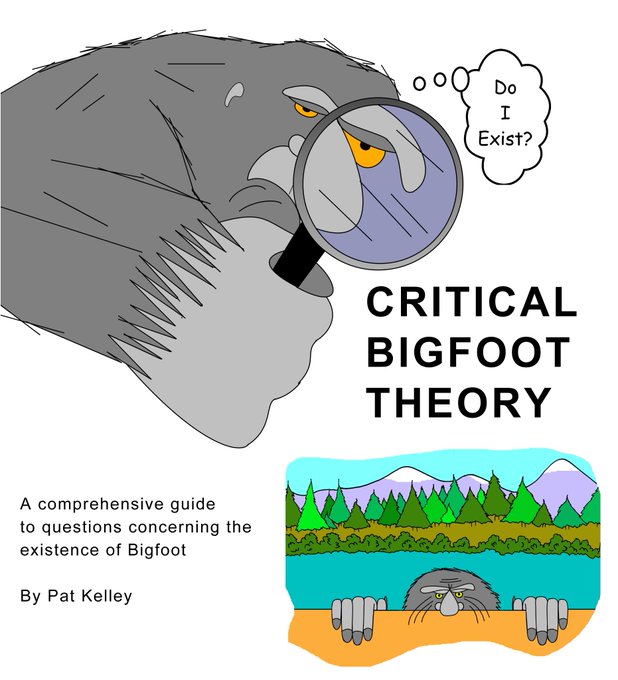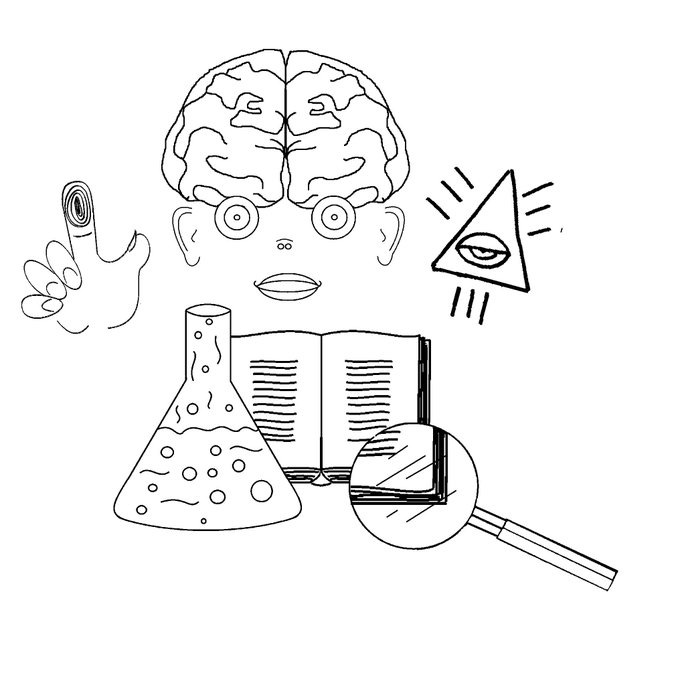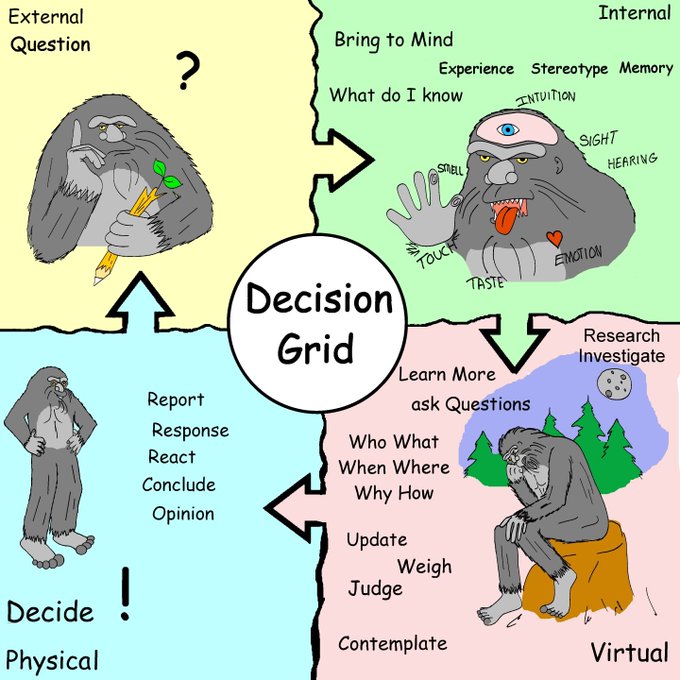Read Time:7 Minute, 2 Second
Critical Bigfoot Theory
Does Bigfoot Exist?
By Pat Kelley
I enjoy stories of UFO hunters and super hero characters and am a fan of Ancient Alien Astronaut theory. I’m a sucker for a good story, just like everybody else, after all, who am I to ruin a good fantasy?
I wrote this Critical Bigfoot Theory in the hopes I could inspire people to be skeptical and think a bit about the rumblings, the statues, the tall tales, the movies, and all those blurry photos and take the stories with a grain of salt…with the salt being critical thinking.
Don’t just take someone’s word for it, ask questions.
Who, What, When, Where, Why and How.
Bigfoot is believed to be a giant, mysterious, ill-tempered, smelly, destructive and hairy mountain beast that lives in seclusion in the forests of Northern California and the greater Pacific Northwest.
Yea but…
How can such a creature exist but never seems to be found?
And there’s the rub.
The Who, What, When, Where, Why and How of the situation.
I’m no educated expert, I’m just an ordinary, opinionated human being with a vivid imagination and penchant for investigation and gift of gab who dabbles in the arts. My favorite inspiring quote is Emily Dickinson’s, “
?” And there’s all the justification I need for this project.
I live near the heart of what is considered Bigfoot territory. Surrounded by forest. Cameras mounted outside the house. Been here four years now and nary a peep, a peek or a whisper of Bigfoot traipsing through the underbrush. Yet everywhere I travel, billboards, statues, paintings, products emblazoned with Bigfoot likeness can be found literally everywhere.
So, what’s the deal with Bigfoot? Does the world just need a boogeyman, a Jason, a Freddie, an alien gray astronaut visitor in order to be happy? Is the world itself not scary enough as it is with wars and strife?
I’ve seen bears, elk, raccoons, rats, mice, an occasional coyote or fox in addition to crows, sea gulls, eagles and falcons but never a sign of Bigfoot – or a space alien visitor for that matter.
I have a penchant for questioning and pointing out inconsistencies, a personality quirk most people seem to find quite annoying, but there we are. I gotta know who, what, where, why, when and how things tick or I just can’t sleep at night.
I’m not scholarly schooled by the distinguished in the finer art of critical thought. This probably makes me pert near an unindoctrinated expert in the finer art of unbridled free thought and wild-ass reasoning, but I get by with a little help from my friends.
Plus, I own every Snowbeast, Sasquatch, Yeti, Bigfoot movie ever made on dvd so my expertise on the subject is legend.
Which is why I decided to tackle this Bigfoot conundrum by putting to good use my particular brand of critical thought for the children… Kiddies who might be losing sleep for fear of getting carted off to a lair and becoming a last meal for Sasquatch. Boo!
First thing I had to do was define critical thought. That was easy, it’s everywhere on the Internet. Just search for the term “critical thought,” and you’ll get 2 or 3 million entries within seconds.
OK, so what is critical thought?
Critical thought is the ability to analyze information in order to formulate judgments, opinions and create solid arguments.
-
Critical thinkers use reason to arrive at conclusions.
-
Critical thinkers study criteria to discern and separate fact from fiction.
-
Critical thinkers think about their own thought processes.
-
Critical thinkers ask questions:
Simple journalistic recommendations for the average reporter of news:
Who, What, When, Where, Why and How
Easy Peasy, right?
Not so fast.
In order to reach logical conclusions we must strive to think objectively, not subjectively, to make decisions based upon facts or reality.
-
Objective: Existing; actual or real, not hypothetical or imagined.
-
Based on observable phenomena; empirical.
-
Not influenced by emotions or personal prejudices
Subjective is the opposite of objective. Subjective conclusions are opinions based upon personal experiences or feelings.
HOW – Examine the evidence:
So, where is the evidence?
That’s where it gets sticky because there’s literally no real evidence for the existence of Bigfoot.
It’s all wrapped up in marketing hype and scary stories…just like the average pharmaceutical advertisement. We’re entering Alica in Wonderland territory without the necessary psychedelics.
I decided to approach this predicament with the god-like attitude that, what, with the dismal quality of education here in California, nobody really knows the first thing about investigating the pricing of a MacDonald’s hamburger, much less effectively researching the existence of a potential supernatural being.
So I decided to build my story from the bottom up and lay a good foundation.
How to research.
Where do we find stuff when we want to know more than what syndicated media dolls out in prepackaged, dumbed-down for short attention span sound-bites.
Here’s a clue:
Types of Resources That Can Help You Research About Bigfoot (and anything else BTW)
💡Dictionary, this is a book that provides an alphabetical list of words with meanings and pronunciation. You can find online dictionaries but I suggest you research several because zealots and idealogues have taken it upon themselves over the past 20 years or so to arbitrarily adapt new and improved definitions according to their personal beliefs. Find a consensus and go with the most commonly shared definitions.
💡Thesaurus is a book,also online that lists words in groups of synonyms and antonyms, also subjected to above mentioned zealotry having been questionably purged of objectionable references.
💡Encyclopedia books in a set or series that contain comprehensive information on topics of knowledge in alphabetical order. I trust
but that is simply personal preference as it’s undoubtedly just as subject to social purges as any info source these days.
💡Trade magazines or newspapers cover a particular trade or industry. Here’s where you get to the good stuff. The people who are actually interested in the subject matter at hand get to write the stories.
💡Professional research papers provide analysis, interpretation, and argument based on in-depth independent research. Now we’re getting closer to academia which suffers from overstuffed puffery, peacockery and hides behind paywalls.
💡Amateurs, enthusiasts. People who do things for enjoyment, not pay. You know, the type of people who boogieboard off mountains and say things like “Hey, watch this.”
💡Eye witness reports given by people of events personally witnessed like seeing weird stuff or getting abducted by aliens.
💡Historical documents original sources about people, places or events that provide important accounts of historical methodology Ancient Alien Astronauts style.
💡Word of mouth, my favorite. Like the game of telephone we played in school. Literature passed verbally from person to person, through poems and songs, myths, dramas, rituals, proverbs, riddles, tales, fables, legends that start with “I went to the store to buy a candy bar” and ends with “Your Mother wears combat boots in Hell” sort of stuff.
💡Internet web sites, the sky’s the limit here. How many websites exist today? over a billion so far. Each carefully culled by government truth departments for accuracy I’m convinced – not. Websites include media, blogs, personal experiences.
💡Books and magazines nonfiction books, specialty magazines provide general information from broad overviews to deep analysis of a subject. Let’s get serious, if it’s on a best seller list it’s probably a pack of butt-kissing propaganda or written by formula and churned out like bad Stephen King novels.
💡Libraries traditional buildings that house collections of books & media and, in California, sheltering weirdos and junkies. Also occasionally used for reading and study, probably better off finding an online library.
As you can see this book is an invaluable contribution to the world of literature and is destined to become one of the great masterpieces of Bigfoot history.
Of course, the actual publication Critical Bigfoot Theory is written in a somewhat serious, educational tone designed, not to make one laugh, perhaps smile, but ultimately consider realities when it comes to simply accepting what is presented versus exercising brain power to discern fact from fiction, a disappearing art form.
More to come. This is just the beginning
Next – the Critical Bigfoot Theory Decision Grid





